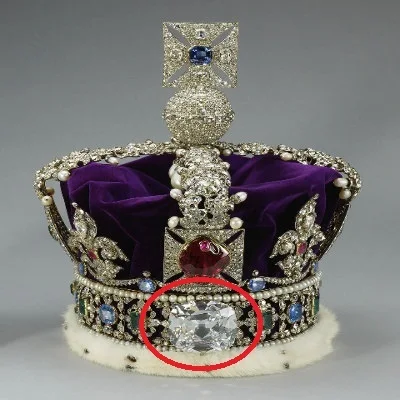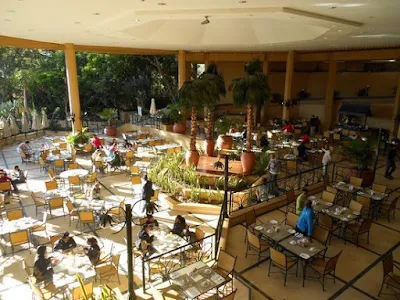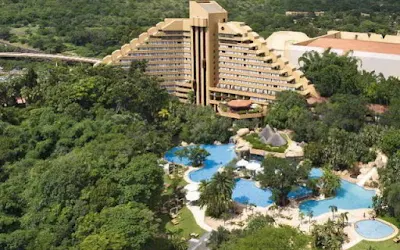Preikestolen or Prekestolen is a tourist attraction in the municipality of Strand in Rogaland county, Norway. Preikestolen is a steep cliff which rises 604 metres (1,982 ft) above the Lysefjorden. Atop the cliff, there is an almost flat top of approximately 25 by 25 metres (82 ft × 82 ft). Preikestolen is located near the Western part of the fjord, and on its North side.
Tourism at the site has been increasing in the early 21st century, with between 150,000 and 200,000 visitors in 2012 making it one of the most visited natural tourist attractions in Norway. BASE jumpers often leap from the cliff. Due to its increased popularity, there is currently a project under way to improve the most used path to the site - a 3.8-kilometre (2.4 mi) long hike.
Tourism at the site has been increasing in the early 21st century, with between 150,000 and 200,000 visitors in 2012 making it one of the most visited natural tourist attractions in Norway. BASE jumpers often leap from the cliff. Due to its increased popularity, there is currently a project under way to improve the most used path to the site - a 3.8-kilometre (2.4 mi) long hike.
he old local name of the site is Hyvlatonnå . The name Prekestolen (without the i) was coined around the year 1900 when the local tourist organisation, Stavanger Turistforening wanted to promote the site for trekking. The "i" was added later to concord with Nynorsk, the official local form of Norwegian, and the site is now known both locally and officially as "Preikestolen."
Preikestolen
is located in the southern part of the Ryfylke district in Rogaland
county in Western Norway. The city of Stavanger, the fourth largest in
Norway, with a number of direct flights between European cities, is
located 25 kilometres (16 mi) from the site, and the parking facility
for Preikestolen is located about one hour from Stavanger by ferry and
car. Access to Preikestolen from Stavanger is via the Norwegian
National Road 13 (Rv13) and the ferry from Tau. From the south, access
is by the Rv13 through Sandnes via the ferry from Lauvvika to Oanes. The
road is usually open and the ferries running year-round. However, due
to snow, it is not always possible to do the hike to the top in the
winter.
The road to the site ends in the municipality of Strand, just south of the town of Jørpeland at a parking facility at the Preikestolen Fjellstue, with a trail extending from the parking facility to the site. A round-trip hike to Preikestolen from the closest car park takes about 3–4 hours for someone of average fitness.
The walk to Preikestolen is very steep in places. The path starts at the Preikestolhytta, at an elevation of approximately 270 metres (890 ft) above sea level, and climbs to 604 metres (1,982 ft). The walk takes 2–3 hours depending on traffic along the trail, experience, and fitness level. Even though the elevation differential is only 334 metres (1,096 ft) and the walk is not particularly long, about 3.8 kilometres (2.4 mi) each way, the total elevation gain and loss over the course of the hike is more than one might initially expect, as the path climbs and descends various ridges. The walk is more difficult in winter and spring when there is snow and ice.
The road to the site ends in the municipality of Strand, just south of the town of Jørpeland at a parking facility at the Preikestolen Fjellstue, with a trail extending from the parking facility to the site. A round-trip hike to Preikestolen from the closest car park takes about 3–4 hours for someone of average fitness.
The walk to Preikestolen is very steep in places. The path starts at the Preikestolhytta, at an elevation of approximately 270 metres (890 ft) above sea level, and climbs to 604 metres (1,982 ft). The walk takes 2–3 hours depending on traffic along the trail, experience, and fitness level. Even though the elevation differential is only 334 metres (1,096 ft) and the walk is not particularly long, about 3.8 kilometres (2.4 mi) each way, the total elevation gain and loss over the course of the hike is more than one might initially expect, as the path climbs and descends various ridges. The walk is more difficult in winter and spring when there is snow and ice.
Alternative access is available via a path from Bratteli - a stop for the tourist ferry from Lauvvik to Lysebotn that passes beneath the Pulpit Rock. This walk is more demanding, and takes 4–5 hours each An alternative is to sail through the Lysefjorden, with trips running year-round. Outside of summer, the weather may be wet and cold, and butts may obstruct views of the cliff. The ship stops at several small docks on the way in and out, including a layover at the end of the Lysefjorden at the village of Lysebotn In early April 2013, a project started to improve the path up to
Preikestolen as the old one was so small that it often caused "delays",
and at some points on the path it was sometimes impossible to get
through. By August 2014, the path was completed. Access to the plateau was improved, and traffic on the way up and down is now much less delayed because of bottlenecks.The cliff overlooks the valleys of the Ryfylke region. The mountains surrounding the cliff reach heights of up to 843 metres (2,766 ft). Some of the hilltops have plains which are interspersed with lakes. Nearby, close to the end of the Lysefjord, is the 1,110-metre (3,640 ft) tall mountain Kjerag which is also a hiking destination. Some tourists elect to forego trips to Preikestolen and go to Kjerag instead.
In popular culture
- A granitesculpture of the cliff was erected in the town Langeskov in Denmark to commemorate its twin town of Forsand.
- In the final scene of the final episode of the second season of Vikings the main character, Ragnar Lothbrok, is seen sitting atop Preikestolen.
- Compressed air from Lysefjorden/Preikestolen is being sold in cans, mostly to China.
- The final fight scene (from 2h:10m to 2h:15m) in Mission: Impossible - Fallout features Tom Cruise climbing the face of the cliff at Preikestolen, although in the movie, it's supposed to be in India in then Kashmir now Laddakh union territory.
- A song Amali Thumali from a movie KO Tamil movie (2011) was shot in Preikestolen. After this song, this place became popular among the South Indian people for tourism.
- A set was played on top of the cliff by Einmusik b2b Jonas Saalbach for Cercle.





















































